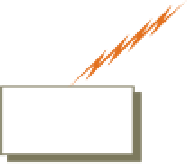Information Technology Reference
In-Depth Information
Original data
Figure 9.4
Data-Processing Activities
Common to Transaction
Processing Systems
Data
collection
Data
editing
Bad
data
Good
data
Data
correction
Data
manipulation
Data
storage
TPS
reports
Document
production
up when the items approach the checkout stand. Using both UPC bar codes and RFID tags
is quicker and more accurate than having a clerk enter codes manually at the cash register.
The product ID for each item is determined automatically, and its price retrieved from the
item database. The point-of-sale TPS uses the price data to determine the customer's bill.
The store's inventory and purchase databases record the number of units of an item pur-
chased, the date, the time, and the price. The inventory database generates a management
report notifying the store manager to reorder items that have fallen below the reorder quan-
tity. The detailed purchases database can be used by the store or sold to marketing research
firms or manufacturers for detailed sales analysis (see Figure 9.5).
Figure 9.5
Customer's
receipt
Point-of-Sale Transaction
Processing System
The purchase of items at the
checkout stand updates a store's
inventory database and its database
of purchases.
Management
reports
Inventory
database
MIS/DSS
Point-of-sale
transaction
processing
system
UPC
Scanner
Quantity
Date
Time
Price,
description
UPC
Management
reports
Purchases
database
MIS/DSS
RFID
A chip sending
out radio waves
Item
database
Management
reports
MIS/DSS

































